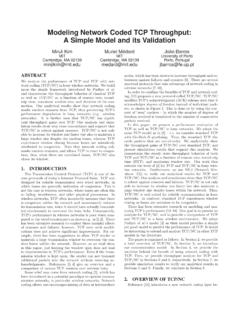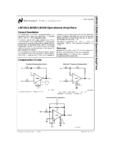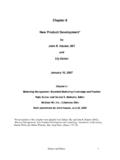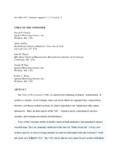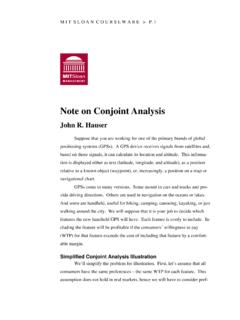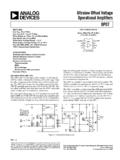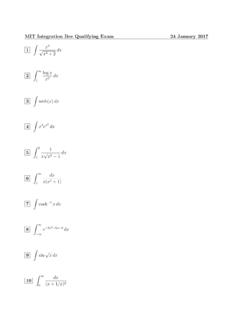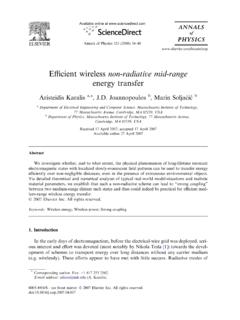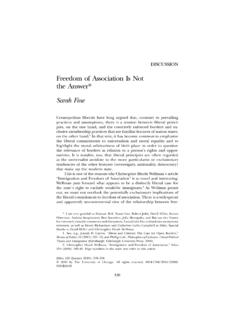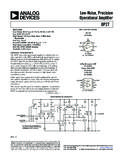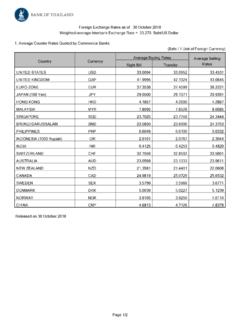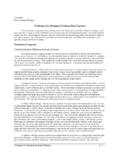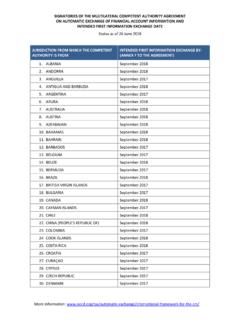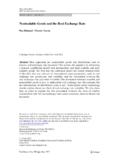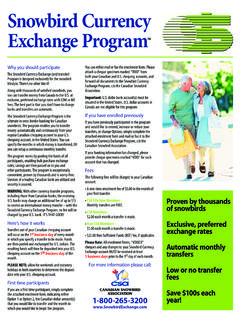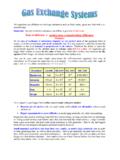Transcription of Price Levels and the Exchange Rate in the Long Run …
1 Price Levels and the Exchange Rate in the Long RunPrice Levels and the Exchange Rate in the Long RunChapter 15 Chapter 15 Prepared byIordanis PetsasTo AccompanyInternational Economics: Theory and PolicyInternational Economics: Theory and Policy, Sixth EditionbyPaul MauriceObstfeldSlide 15-2 Copyright 2003 Pearson Education, Organization Introduction The Law of One Price Purchasing Power Parity A Long-Run Exchange Rate Model Based on PPP Empirical Evidence on PPP and the Law of One Price Explaining the Problems with PPPS lide 15-3 Copyright 2003 Pearson Education, Organization Beyond Purchasing Power Parity: A General Model of Long-Run Exchange Rates International Interest Rate Differences and the Real Exchange Rate Real Interest Parity Summary Appendix: The Fisher Effect, the Interest Rate, and the Exchange Rate Under the Flexible- Price Monetary ApproachSlide 15-4 Copyright 2003 Pearson Education, The model of long-run Exchange rate behavior provides the framework that actors in asset markets use to forecast future Exchange rates.
2 Predictions about long-run movements in Exchange rates are important even in the short run. In the long run, national Price Levels play a key role in determining both interest rates and the relative prices at which countries products are traded. The theory of purchasing power parity (PPP)explains movements in the Exchange rate between two countries currencies by changes in the countries Price 15-5 Copyright 2003 Pearson Education, Law of One Price Law of one Price Identical goods sold in different countries must sell for the same Price when their prices are expressed in terms of the same currency. This law applies only in competitive markets free of transport costs and official barriers to trade. Example: If the dollar/pound Exchange rate is $ per pound, a sweater that sells for $45 in New York must sell for 30 in 15-6 Copyright 2003 Pearson Education, Law of One Price It implies that the dollar Price of good i is the same wherever it is sold:PiUS= (E$/ ) x (PiE)where:PiUS is the dollar Price of good iwhen sold in the is the corresponding euro Price in EuropeE$/ is the dollar/euro Exchange rateSlide 15-7 Copyright 2003 Pearson Education, Power Parity Theory of Purchasing Power Parity (PPP) The Exchange rate between two counties currencies equals the ratio of the counties Price Levels .
3 It compares average prices across countries. It predicts a dollar/euro Exchange rate of:E$/ = PUS/PE (15-1)where:PUSis the dollar Price of a reference commodity basket sold in the United StatesPEis the euro Price of the same basket in EuropeSlide 15-8 Copyright 2003 Pearson Education, Power Parity By rearranging Equation (15-1), one can obtain:PUS= (E$/ ) x (PE) PPP asserts that all countries Price Levels are equal when measured in terms of the same 15-9 Copyright 2003 Pearson Education, Power Parity The Relationship Between PPP and the Law of One Price The law of one Price applies to individual commodities, while PPP applies to the general Price level. If the law of one Price holds true for every commodity, PPP must hold automatically for the same reference baskets across countries. Proponents of the PPP theory argue that its validity does not require the law of one Price to hold 15-10 Copyright 2003 Pearson Education, Power Parity Absolute PPP and Relative PPP Absolute PPP It states that Exchange rates equal relative Price Levels .
4 Relative PPP It states that the percentage change in the Exchange rate between two currencies over any period equals the difference between the percentage changes in national Price Levels . Relative PPP between the United States and Europe would be:(E$/ ,t -E$/ , t 1)/E$/ , t 1 = US, t - E, t (15-2)where: t = inflation rateSlide 15-11 Copyright 2003 Pearson Education, Long-Run Exchange Rate Model Based on PPP Monetary approach to the Exchange rate A theory of how Exchange rates and monetary factors interact in the long run. The Fundamental Equation of the Monetary Approach Price Levels can be expressed in terms of domestic money demand and supplies: In the United States:PUS = MsUS/L (R$, YUS) (15-3) In Europe:PE = MsE/L (R , YE) (15-4)Slide 15-12 Copyright 2003 Pearson Education, Long-Run Exchange Rate Model Based on PPP The monetary approach makes a number of specific predictions about the long-run effects on the Exchange rate of changes in: Money supplies An increase in the (European) money supply causes a proportional long-run depreciation (appreciation) of the dollar against the euro.
5 Interest rates A rise in the interest rate on dollar (euro) denominated assets causes a depreciation (appreciation) of the dollar against the euro. Output Levels A rise in (European) output causes an appreciation (depreciation) of the dollar against the 15-13 Copyright 2003 Pearson Education, Long-Run Exchange Rate Model Based on PPP Ongoing Inflation, Interest Parity, and PPP Money supply growth at a constant rate eventually results in ongoing inflation ( , continuing rise in the Price level) at the same rate. Changes in this long-run inflation rate do not affect the full-employment output level or the long-run relative prices of goods and services. The interest rate is not independent of the money supply growth rate in the long 15-14 Copyright 2003 Pearson Education, Long-Run Exchange Rate Model Based on PPP The international interest rate difference is the difference between expected national inflation rates:R$-R = eUS- e (15-5)Slide 15-15 Copyright 2003 Pearson Education, Long-Run Exchange Rate Model Based on PPP The Fisher Effect A rise (fall) in a country s expected inflation rate will eventually cause an equal rise (fall) in the interest rate that deposits of its currency offer.
6 Figure 15-1 illustrates an example, where at time t0the Federal Reserve unexpectedly increases the growth rate of the money supply to a higher 15-16 Copyright 2003 Pearson Education, Long-Run Exchange Rate Model Based on PPPS lope = + Slope = + t0 MUS, t0 Slope = (a) money supply, MUSTimeSlope = Slope = t0 Slope = + t0t0R$2= R$1+ R$1 Figure 15-1: Long-Run Time Paths of Economic Variables after a Permanent Increase in the Growth Rate of the Money Supply(d) Dollar/euro Exchange rate, E$/ Time(b) Dollar interest rate, R$Time(c) Price level, PUSTimeSlide 15-17 Copyright 2003 Pearson Education, Long-Run Exchange Rate Model Based on PPP In this example, the dollar interest rate rises because people expect more rapid future money supply growth and dollar depreciation. The interest rate increase is associated with higher expected inflation and an immediate currency depreciation.
7 Figure 15-2 confirms the main long-run prediction of the Fisher 15-18 Copyright 2003 Pearson Education, Long-Run Exchange Rate Model Based on PPPF igure 15-2: Inflation and Interest Rates in Switzerland, the United States, and Italy, 1970-2000 Slide 15-19 Copyright 2003 Pearson Education, Long-Run Exchange Rate Model Based on PPPF igure 15-2: ContinuedFigure 15-2: ContinuedSlide 15-20 Copyright 2003 Pearson Education, Long-Run Exchange Rate Model Based on PPPF igure 15-2: ContinuedSlide 15-21 Copyright 2003 Pearson Education, Evidence on PPP and the Law of One Price The empirical support for PPP and the law of one Price is weak in recent data. The prices of identical commodity baskets, when converted to a single currency, differ substantially across countries. Relative PPP is sometimes a reasonable approximation to the data, but it performs 15-22 Copyright 2003 Pearson Education, Evidence on PPP and the Law of One PriceFigure 15-3: The Dollar/DM Exchange Rate and Relative Price Levels , 1964-2000 Slide 15-23 Copyright 2003 Pearson Education, the Problems with PPP The failure of the empirical evidence to support the PPP and the law of one Price is related to: Trade barriers and nontradables Departures from free competition International differences in Price level measurementSlide 15-24 Copyright 2003 Pearson Education, the Problems with PPP Trade Barriers and Nontradables Transport costs and governmental trade restrictions make trade expensive and in some cases create nontradablegoods.
8 The greater the transport costs, the greater the range over which the Exchange rate can 15-25 Copyright 2003 Pearson Education, the Problems with PPP Departures from Free Competition When trade barriers and imperfectly competitive market structures occur together, linkages between national Price Levels are weakened further. Pricing to market When a firm sells the same product for different prices in different markets. It reflects different demand conditions in different countries. Example: Countries where demand is more Price -inelastic will tend to be charged higher markups over a monopolistic seller s production 15-26 Copyright 2003 Pearson Education, the Problems with PPP International Differences in Price Level Measurement Government measures of the Price level differ from country to country because people living in different counties spend their income in different ways.
9 PPP in the Short Run and in the Long Run Departures from PPP may be even greater in the short-run than in the long run. Example: An abrupt depreciation of the dollar against foreign currencies causes the Price of farm equipment in the to differ from that of foreign suntil markets adjust to the Exchange rate 15-27 Copyright 2003 Pearson Education, the Problems with PPPF igure 15-4: Price Levels and Real Incomes, 1992 Slide 15-28 Copyright 2003 Pearson Education, Purchasing Power Parity: A General Model of Long-Run Exchange Rates The Real Exchange Rate It is a broad summary measure of the prices of one country s goods and services relative to the other's. It is defined in terms of nominal Exchange ratesand Price Levels . The real dollar/euro Exchange rate is the dollar Price of the European basket relative to that of the American:q$/ = (E$/ x PE)/PUS(15-6) Example: If the European reference commodity basket costs 100, the basket costs $120, and the nominal Exchange rate is $ per euro, then the real dollar/euro Exchange rate is 1 basket per European 15-29 Copyright 2003 Pearson Education, Purchasing Power Parity: A General Model of Long-Run Exchange Rates Real depreciation of the dollar against the euro A rise in the real dollar/euro Exchange rate That is, a fall in the purchasing power of a dollar within Europe s borders relative to its purchasing power within the United States Or alternatively, a fall in the purchasing power of America s products in general over Europe s.
10 Areal appreciation of the dollar against the euro is the opposite of a real 15-30 Copyright 2003 Pearson Education, Purchasing Power Parity: A General Model of Long-Run Exchange Rates Demand, Supply, and the Long-Run Real Exchange Rate In a world where PPP does not hold, the long-run values of real Exchange rates depend on demand and supply 15-31 Copyright 2003 Pearson Education, Purchasing Power Parity: A General Model of Long-Run Exchange Rates There are two specific causes that explain why the long-run values of real Exchange rates can change: A change in world relative demand for American products An increase (fall) in world relative demand for output causes a long-run real appreciation (depreciation) of the dollar against the euro. A change in relative output supply A relative expansion of (European) output causes a long-run real depreciation (appreciation) of the dollar against the 15-32 Copyright 2003 Pearson Education, Purchasing Power Parity: A General Model of Long-Run Exchange Rates Nominal and Real Exchange Rates in Long-Run Equilibrium Changes in national money supplies and demands give rise to the proportional long-run movements in nominal Exchange rates and international Price level ratios predicted by the relative PPP theory.
